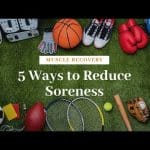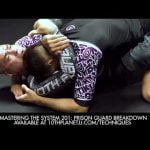Why Do My Tendons Hurt After Working Out? Understanding Post-Exercise Tendon Pain
Tendon pain after a workout is a common issue that many individuals experience. Understanding why this happens can help you find effective strategies to alleviate the discomfort.
1. Overuse: One of the primary reasons for tendon pain is overuse. When you engage in repetitive movements or excessive strain on your tendons, they can become irritated and inflamed. This can lead to pain and discomfort after your workout.
2. Poor technique: Incorrect form or technique during exercises can put unnecessary stress on your tendons, leading to pain and potential injury. It is essential to ensure proper form and technique to avoid tendon pain.
3. Muscle imbalances: Imbalances in muscle strength or flexibility can contribute to tendon pain. When certain muscles are stronger or tighter than others, it can create an uneven distribution of forces, putting strain on the tendons.
Quickly Heal Tendon Pain: Effective Methods and Tips
If you’re experiencing tendon pain after a workout, there are several strategies you can implement to promote healing and alleviate discomfort.
1. Rest and recovery: Give your tendons time to rest and recover. Avoid activities that exacerbate the pain and allow your body to heal naturally.
2. Ice therapy: Applying ice to the affected area can help reduce inflammation and provide temporary pain relief. Use an ice pack or wrap ice in a towel and apply it to the painful tendon for 15-20 minutes several times a day.
3. Stretching and strengthening exercises: Incorporate gentle stretching exercises to improve flexibility and strengthen the surrounding muscles. This can help alleviate tension on the tendons and promote healing.
4. Gradual progression: Avoid sudden increases in workout intensity or duration. Gradually progress your workouts to allow your tendons to adapt and strengthen over time.
How Long Does It Take for Tendons to Heal After a Workout? Expert Insights & Tips
The healing time for tendons after a workout can vary depending on the severity of the injury and individual factors. However, with proper care and following the strategies mentioned above, most mild tendon injuries can heal within a few weeks to a couple of months.
It’s important to listen to your body and not rush the healing process. Pushing through the pain can lead to further damage and prolong the recovery time. If you’re experiencing persistent or severe tendon pain, it is advisable to consult with a healthcare professional for a proper diagnosis and treatment plan.
Preventing Tendonitis: Effective Tips for Post-Workout Care
Preventing tendonitis is crucial to maintain a healthy and pain-free workout routine. Here are some effective tips for post-workout care that can help prevent tendon pain:
1. Warm-up and cool-down: Always start your workout with a proper warm-up to prepare your muscles and tendons for the activity. Similarly, cool down afterward with gentle stretches to promote blood flow and flexibility.
2. Vary your workouts: Avoid repetitive movements and incorporate a variety of exercises to prevent overuse of specific tendons. This can help distribute the load more evenly and reduce the risk of tendonitis.
3. Listen to your body: Pay attention to any signs of pain or discomfort during your workouts. If you notice any unusual sensations in your tendons, modify or stop the activity to prevent further damage.
4. Use proper equipment: Ensure that you are using appropriate equipment and gear for your workouts. Ill-fitting shoes or equipment can contribute to tendon pain and injury.
By implementing these strategies and taking proper care of your tendons, you can alleviate post-workout tendon pain, promote healing, and prevent future injuries. Remember to always prioritize your body’s well-being and consult with a healthcare professional if you have persistent or severe tendon pain.














